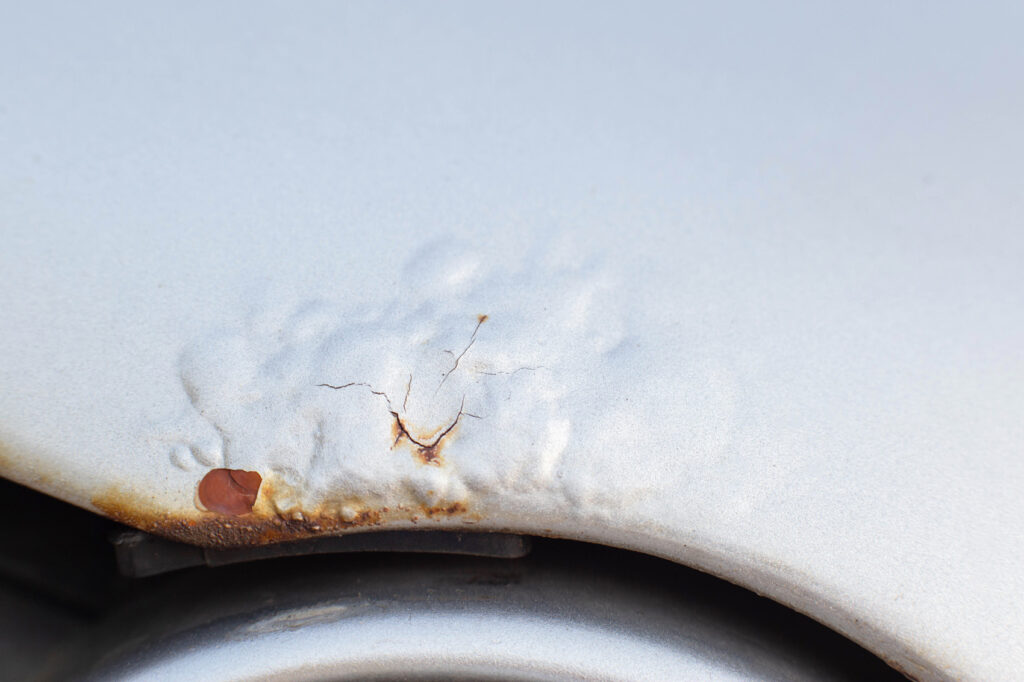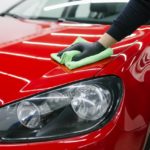Make no mistake about it, bubbles in car paint are a cause of concern. They can lead to harmful effects on the overall paint job, and they can even damage the internal parts of your vehicle.
As such, it’s crucial to know the reasons why bubbles appear in car paint, how to remove them as well as find ways to prevent them.
Reasons Why Bubbles Appear in Car Paint
Bubbles appear in car paint due to a process known as osmotic blistering. Simply put, this is the accumulation of moisture at points within a coated firm. It occurs when water is trapped because of early overcoating.
The trapped moisture finds a way to release itself, resulting in bubbles. Aside from early overcoating, various conditions could also lead to blisters.

- Application of paint in humid conditions.
- The paint didn’t dry soon enough and trapped moisture or debris during the process.
- The paint was removed, and moisture or debris formed on the steel before a new coat was painted over them.
- The use of low-quality paint thinner.
- The overcoat was applied before the undercoat was fully dried.
- Rust has formed and developed beneath the undercoat.
- Poor application technique.
How to Remove Bubbles in Car Paint
There are a handful of ways you can remove bubbles in your car paint. Some of the most common ones include sanding, repainting, and buffing.
Sanding
One way to remove bubbles is by sanding over them. The idea behind this method is to remove enough of the overcoat that you can get to the bubble itself.
To do this, soak sandpaper in water and scrub over the bubble. Once the water dries, the bubble should be gone. It’s essential to lightly scrub because you may damage the undercoat. This will expose the steel, which forces you to get a new paint job.
Repainting
The simplest and safest way of dealing with bubble removal is by removing the old paint job and repainting the vehicle. This process ensures your car is not prone to scratches, unlike sanding. It also prevents bubbles from resurfacing elsewhere.
Buffing
Buffing refers to the use of a machine with rotating pads to apply a mixture of chemicals that help remove scratches, oxidation, and the like from the car’s paintwork.
It’s similar to polishing, but buffing is more aggressive and is often used on paint jobs that have significant imperfections.
Do note that due to the nature of the process, this approach can harm your vehicle’s overall paint job. It’s best to find someone experienced and skilled to buff your vehicle.
Types of Bubbles in Car Paint

Different types of blisters and bubbles may form on automotive paint. These are tiny bubbles, solvent pops/pinholes, and fisheyes.
Tiny Bubbles
This is the most basic type of paint bubble. They’re small, round, and resemble half-bubbles. They’re formed when moisture or debris is trapped during the painting process. They’re likely to form when a vehicle is painted on a humid day.
Solvent Pop or Pinholes
Solvent pops, also known as pinholes, are characterized by small holes that appear on your car paint. Pinholes typically appear due to the hasty application of the clear coat.
Fisheyes
Fisheyes resemble small craters with a slight bulge in the middle. They’re caused by contaminants, such as silicon, dirt, or wax, stuck to the surface before painting. These contaminants prevent the paint from sticking to the surface.
Effects of Bubbles on Car Paint
Bubbles in car paint have different effects that could damage or lower the value of your vehicle:
Aesthetically Unappealing
Most car owners get a new paint job to give their vehicles a fresh and vibrant look. Unfortunately, bubbles get in the way of that as they’re unappealing to look at. Subsequently, they can also lower the resale value of a vehicle.
Impacts Paint Durability
After some time, popped paint bubbles lead to peeling. When this happens, the steel beneath the paint is exposed.
Once the paint starts to peel, the only option you have is to get the vehicle repainted as soon as possible. If the issue remains unfixed, it may lead to more damage and a larger bill for repairs.
May Cause Rust

A vehicle with exposed steel is prone to rusting if driven in the rain or snow. It’s advisable to have the exposed part painted over immediately, as the internal parts of the car could also get damaged.
How to Prevent Bubbles in Car Paint
Experts recommend having your car repainted every five years. Due to this, bubbles are bound to reappear if you’re not knowledgeable about preventive measures you can take.
Here are some ways you can prevent bubbles and blisters from showing up on your newly painted car:
Apply Paint Under Ideal Conditions
Try to apply paint when the humidity is low. This minimizes the chance of moisture getting trapped during the drying process. Going to an air-conditioned shop with a dedicated painting room should help reduce the chances of bubbles forming.
Correct Application Techniques
Poor application techniques, such as painting thickly will often lead to pockets of air in the paint job. As such, it’s highly recommended to seek professional help when applying a fresh layer of paint.
There are a handful of different factors that may affect the cost of having your car painted by a pro. Expect to spend somewhere between $100 and $1,000, depending on the year, make, model, and size of your vehicle.
Similarly, painting newer cars may cost more because their paint jobs are fresher.
Painting newer cars may cost more because their paint jobs are fresher.
–Anthony Harlin, ASE Certified Master Automobile Technician
Use High-Quality Paint Thinner
Lastly, make sure you’re using high-quality paint thinner to finish the car’s paint job. Doing so ensures you don’t damage the existing paint and minimizes the possibility of rusting.
Any information provided on this Website is for informational purposes only and is not intended to replace consultation with a professional mechanic. The accuracy and timeliness of the information may change from the time of publication.






























